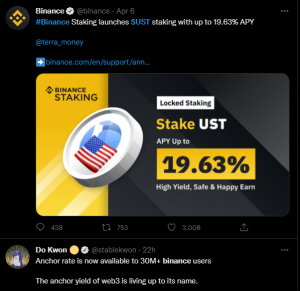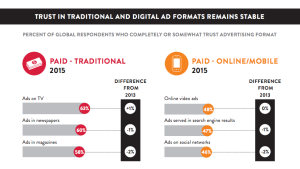How Brands Can Best Navigate The Cookie-less Future
There are massive changes afoot in the digital ecosystem related to consumer privacy, government regulation, and big-tech player moves, with far-reaching implications for brands and digital marketers.
As the industry prepares for the elimination of third-party cookies, the loss of this plus other universal identifiers alters the dynamic of the marketing world, and specifically the digital advertising world.
The impact of and future implications of these shifts are difficult to comprehend fully. One recent study found that only 35% of advertisers have a solid understanding of the key issues, emerging industry response, and anticipated developments needed to address these upcoming changes.
Surprisingly, less than half of marketers have formulated alternative strategies in response to these industry changes. Why?
Over the last ten years or so, the foundation of digital marketing was built on the third-party cookie. What makes this more difficult is the technology piece in play.
It will take longer to figure out how to make this new system work. There will be a period where there will be great deal of waste and inefficiency from a measurement perspective until marketers determine fully how this new ecosystem works. Despite the inaction, it’s clear that brands must find new ways to target audiences, understand consumer behavior, and measure the effectiveness of their marketing.
Here are some pointers for brands to help them best navigate the cookieless future and take next steps for success.
Using Walled Gardens
Due to privacy-centric regulatory and policy shifts, closed ecosystems such as Amazon, Facebook, Google, and even Walmart may be the industry’s go-to for the foreseeable future.
Paid social media, in particular, is often used by brands to target specific audiences as the industry moves toward a cookieless future.
Therefore, paid social likely will grow in importance and perhaps also in cost. As these walled gardens require positive ID and login, they provide a certainty many others on the open web do not.
Companies and agencies who previously relied on third-party cookies and other identifiers must look more heavily toward walled gardens like social media where they can target audiences and affinities using first-party data, analytics, and resources.
Moving from cookie-based data to first-party identity has also made retail media a hot attraction for brands. Vast troves of first-party user data (including purchase history) and proximity to the buying opportunity is an appealing combination to many brands.
Cookie 2.0: Future Alternatives
There is a clear motivation for ad technology to innovate. Given the dollars — and businesses at risk — it’s no surprise that various solutions are in development today.
Some of these are designed to track consumer interests and serve relevant ads without relying on third-party data. Some of these target audiences are without any online identifiers, and some offer workarounds for privacy-first measures.
Here are a few of the top contenders:
Google has delayed removing third-party identifiers from Chrome, so third-party cookies still track people’s browsing habits across websites. But it is developing its Privacy Sandbox and Federated Learning of Cohorts, also known as FLoCs, in an attempt to keep its marketplace lead as the privacy-first future ramps up.
Verizon Media is launching Next-Gen Solutions to help brands and publishers target audiences without online identifiers. Using AI trained on first-party data from Verizon Media websites like Yahoo, its solution infers audience characteristics based on context and real-time signals from devices. The solution requires no user-level profiles and reportedly works across multiple internet browsers.
An “industry effort” led by key player The Trade Desk (the most prominent independent DSP) is named Unified ID 2.0. It is an open-source ID framework built from hashed and encrypted email addresses. Unified ID 2.0 will remain open while introducing significant upgrades to consumer privacy and transparency. To be turned over to an independently governed body later, the solution appears to be gathering more support within the agency world. Still, it has yet to be as widely embraced by publishers.
Even with the above options, a silver-bullet replacement for third-party cookies or mobile advertising IDs isn’t likely given the industry structure, conflicting interest groups, and privacy regulations.
There is likely not a universal solution that will work for everybody. Different tech companies are working on a lot of solutions right now with advertisers in the background, but brands will not be able to manage in the same way as in the past.
The First-Party Data Mandate
The first step in finding ways to target audiences and measure digital marketing effectiveness should be taking an internal look.
A brand’s greatest asset is its customers; to maximize the value of this asset, the only true path for brands is to invest in first-party data strategies.
Despite the changes in the digital ecosystem, people will still exchange their data for utility and value — as long as they believe sharing data leads to more personalized experiences that add value.
One of the major changes that will be most effective moving forward is a much greater focus on first-party data. When a brand owns its own data, it’s in greater control and is much less susceptible to changes that some of the big advertising and technology players are planning to make.
Acquiring and securing consent-based, first-party data is a priority.
Brands should develop their own first-party identity graphs, build data from internal sources, access second-party data through non-competitive partnerships, and collect their zero-party (or declared) data by asking customers to share more with them.
And once a brand has the data, it can use it for retargeting.
Privacy-first solutions don’t protect only consumers, but also brands. Brands must act in a consent-based, privacy-first manner to protect and grow their revenues and build better consumer relationships.
The last piece of advice? Don’t wait.
Lean into the changes now before you’re forced to scramble and settle for suboptimal solutions.
(33)
Report Post






